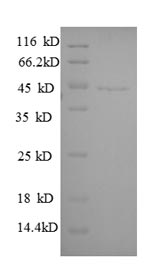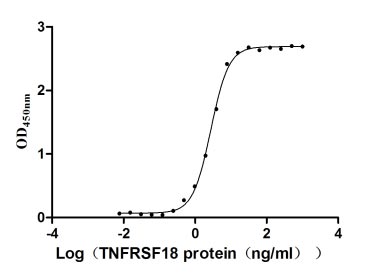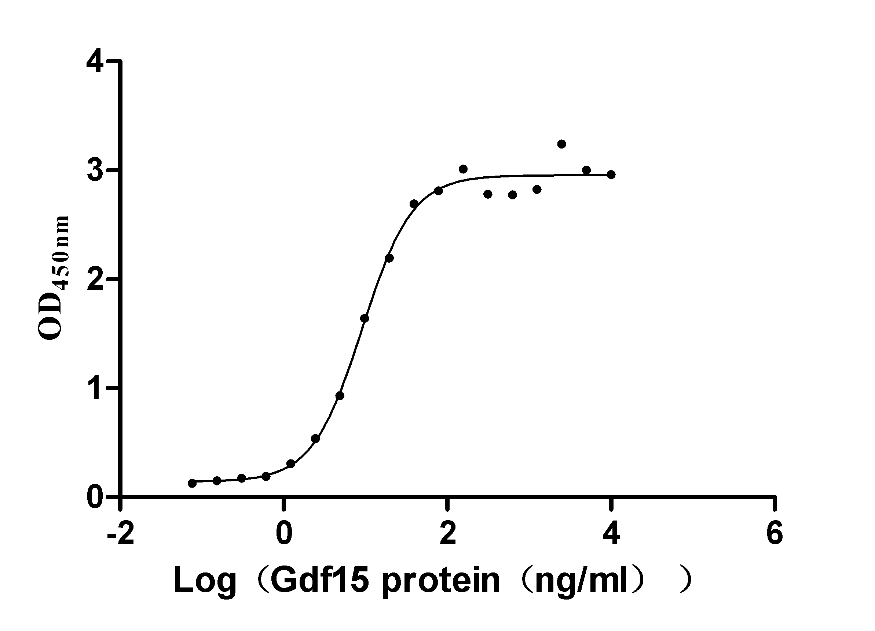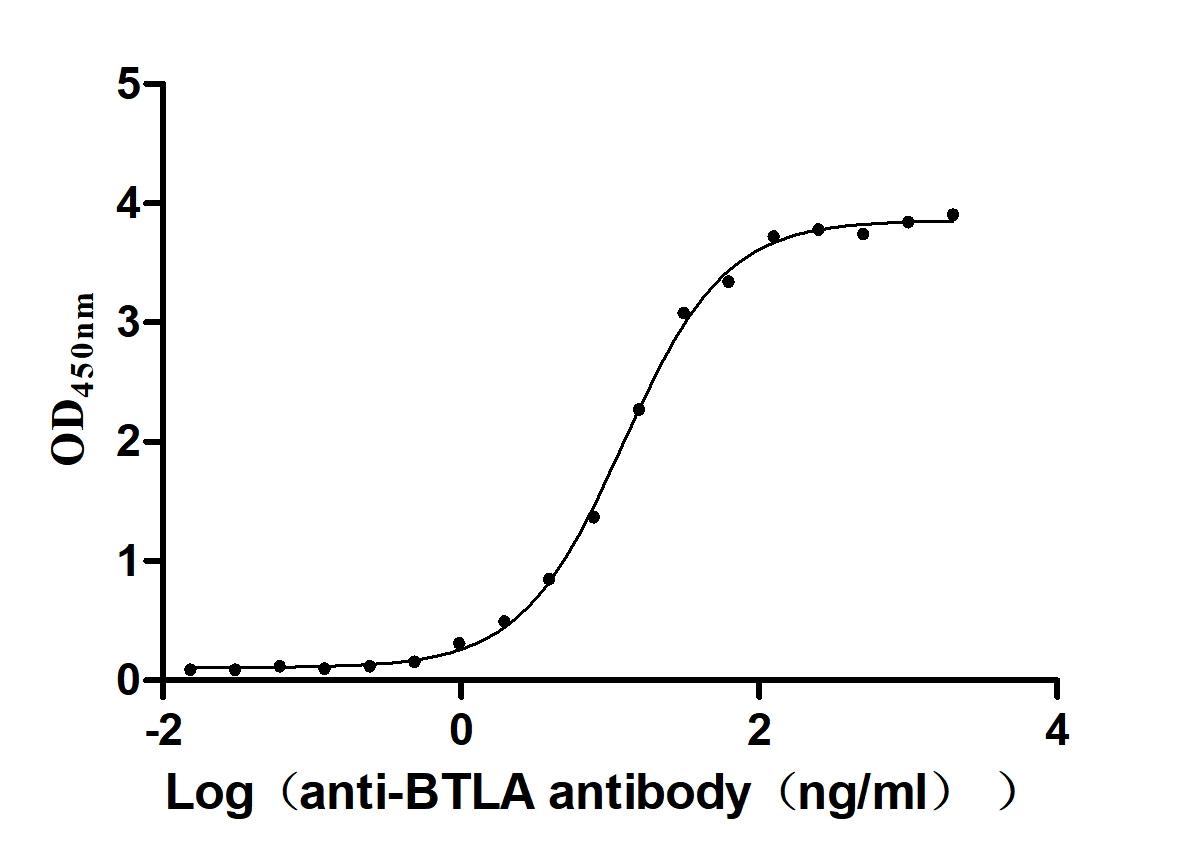Recombinant Human Guanine nucleotide-binding protein G (i) subunit alpha-3 (GNAI3)
In Stock-
货号:CSB-EP009591HU
-
规格:¥1344
-
图片:
-
其他:
产品详情
-
纯度:Greater than 90% as determined by SDS-PAGE.
-
基因名:
-
Uniprot No.:
-
别名:87U6; FLJ26559; G protein alpha inhibiting 3; G(i) alpha 3 ; G(i) alpha-3; GNAI3; GNAI3_HUMAN; Guanine nucleotide binding protein (G protein) alpha inhibiting activity polypeptide 3 ; Guanine nucleotide binding protein G(k) alpha subunit; Guanine nucleotide-binding protein G(k) subunit alpha; OTTHUMP00000013368
-
种属:Homo sapiens (Human)
-
蛋白长度:Full Length
-
来源:E.coli
-
分子量:44.5kDa
-
表达区域:1-354aa
-
氨基酸序列MGCTLSAEDKAAVERSKMIDRNLREDGEKAAKEVKLLLLGAGESGKSTIVKQMKIIHEDGYSEDECKQYKVVVYSNTIQSIIAIIRAMGRLKIDFGEAARADDARQLFVLAGSAEEGVMTPELAGVIKRLWRDGGVQACFSRSREYQLNDSASYYLNDLDRISQSNYIPTQQDVLRTRVKTTGIVETHFTFKDLYFKMFDVGGQRSERKKWIHCFEGVTAIIFCVALSDYDLVLAEDEEMNRMHESMKLFDSICNNKWFTETSIILFLNKKDLFEEKIKRSPLTICYPEYTGSNTYEEAAAYIQCQFEDLNRRKDTKEIYTHFTCATDTKNVQFVFDAVTDVIIKNNLKECGLY
Note: The complete sequence including tag sequence, target protein sequence and linker sequence could be provided upon request. -
蛋白标签:N-terminal 6xHis-tagged
-
产品提供形式:Liquid or Lyophilized powder
Note: We will preferentially ship the format that we have in stock, however, if you have any special requirement for the format, please remark your requirement when placing the order, we will prepare according to your demand. -
缓冲液:Tris-based buffer,50% glycerol
-
储存条件:Store at -20°C/-80°C upon receipt, aliquoting is necessary for mutiple use. Avoid repeated freeze-thaw cycles.
-
保质期:The shelf life is related to many factors, storage state, buffer ingredients, storage temperature and the stability of the protein itself.
Generally, the shelf life of liquid form is 6 months at -20°C/-80°C. The shelf life of lyophilized form is 12 months at -20°C/-80°C. -
货期:3-7 business days
-
注意事项:Repeated freezing and thawing is not recommended. Store working aliquots at 4°C for up to one week.
-
Datasheet & COA:Please contact us to get it.
相关产品
靶点详情
-
功能:Heterotrimeric guanine nucleotide-binding proteins (G proteins) function as transducers downstream of G protein-coupled receptors (GPCRs) in numerous signaling cascades. The alpha chain contains the guanine nucleotide binding site and alternates between an active, GTP-bound state and an inactive, GDP-bound state. Signaling by an activated GPCR promotes GDP release and GTP binding. The alpha subunit has a low GTPase activity that converts bound GTP to GDP, thereby terminating the signal. Both GDP release and GTP hydrolysis are modulated by numero...显示更多
-
基因功能参考文献:
- magnetic field-dependent nuclear magnetic resonance relaxation analyses were used to investigate the structural and dynamic properties of GDP bound Galpha on a microsecond timescale. PMID: 28223697
- Results show that Galphai3 nuclear translocation causes irradiation resistance in human glioma cells through its complexation with DNA-PKcs leading to DNA repair. PMID: 28456783
- GNAI3 is identified a second gene possibly responsible for X-linked ocular albinism. PMID: 27607449
- Data show that auriculo-condylar syndrome (ACS)-associated mutations in G protein subunit alpha i3 (GNAI3) produce dominant-negative Galpha(i3) mutant proteins that couple to endothelin type A receptor (ET(A)R). PMID: 27072656
- In postmortem human prefrontal cortex, adenosine A1 receptor is coupled preferentially, if not exclusively, to Galphai-3. PMID: 26213104
- transcriptional upregulation of Girdin expression and Girdin-Galphai3 signaling play crucial roles in regulating epithelial apicobasal polarity through the PAR complex. PMID: 25977476
- GIV and its substrate Galphai3 are recruited to active integrin complexes PMID: 26391662
- We demonstrate that the GNAI3 variant is the likely cause of auriculocondylar syndrome in the original ACS1 family. PMID: 25026904
- Both SH2 and GEF domains of GIV are required for the formation of a ligand-activated ternary complex between GIV, Galphai3, and EGFR. PMID: 25187647
- Low GNAI3 expression is associated with hepatocellular carcinoma. PMID: 25444921
- Data indicate that dynein- and astral microtubule-mediated transport of Galphai/LGN/nuclear mitotic apparatus (NuMA) complex from cell cortex to spindle poles. PMID: 23389635
- The phenotypic variability of auriculocondylar syndrome suggests that mutations in this pathway, especially those affecting core signaling molecules such as PLCB4 and GNAI3, should be considered as potential candidates for other ear and jaw malformations. PMID: 22560091
- These results identify the Oa1 transducer Galphai3 as the first downstream component in the Oa1 signaling pathway. PMID: 21931697
- The mechanisms of regulation of GIRK by Galpha(i/o) using wild-type Galpha(i3) (Galpha(i3)WT) and Galpha(i3), were investigated. PMID: 21795707
- These results provide mechanistic insights into how reversible modulation of Galpha(i3) activity by AGS3 and GIV maintains the delicate equilibrium between promotion and inhibition of autophagy. PMID: 21209316
- Data suggest that Galphai-TNFAIP8-mediated rescue of pre-oncogenic cells enhances progression to oncogenic transformation, providing a selective target to inhibit cellular transformation. PMID: 20607800
- we show that A3 adenosine receptor/Gi3 play important roles in human mast cells responses initiated on contact with activated T cells. PMID: 20190146
- These data present AGS3, G-proteins, and mInsc as candidate proteins involved in regulating cellular stress associated with protein-processing pathologies. PMID: 20065032
- Overexpression of GIPN stimulates proteasome-dependent reduction of endogenous G alpha i3 in HEK293 cells and reduces the half-life of overexpressed G alpha i3-YFP. PMID: 12826607
- diffraction data were collected to 2.5 A resolution at 100 K using synchrotron radiation at Pohang beamline 4A for human RGS10 complexed with Galphai3 [Galphai3] PMID: 16511171
- x-ray crystallography of the complex of RGS5 and Galphai(3) proteins with GDP/Mg(2+)/AlF(4)(-) at 3.0 A resolution PMID: 17100651
- The Galphai3-GIV switch serves to link direction sensing from different families of chemotactic receptors to formation of the leading edge during cell migration. PMID: 18663145
- Insulin-like growth factor-binding protein-5 stimulates growth of human intestinal muscle cells by activation of Galphai3. PMID: 19808657
收起更多
-
相关疾病:Auriculocondylar syndrome 1 (ARCND1)
-
亚细胞定位:Cytoplasm. Cell membrane; Lipid-anchor. Cytoplasm, cytoskeleton, microtubule organizing center, centrosome.
-
蛋白家族:G-alpha family, G(i/o/t/z) subfamily
-
数据库链接:
HGNC: 4387
OMIM: 139370
KEGG: hsa:2773
STRING: 9606.ENSP00000358867
UniGene: Hs.73799





















